Effect of Phase Change Materials and Phase Change Temperature on Optimization of Design Parameters of Anaerobic Reactor Thermal Insulation Structure
Abstract
:1. Introduction
2. Experimental Apparatus and Computational Model
2.1. Experimental Apparatus
2.2. Computational Model
3. Results and Discussion
3.1. Side Structure
3.2. Top Structure
4. Conclusions
Author Contributions
Funding
Institutional Review Board Statement
Informed Consent Statement
Conflicts of Interest
References
- Liu, C.; Sun, Y.; Li, D. Influence of enclosure filled with PCM on photo-thermal regulation of direct absorption anaerobic reactor: Numerical and Experimental study. Appl. Energy 2022, 56, 86–97. [Google Scholar]
- Tafarroj, M.M.; Daneshazarian, R.; Kasaeian, A. CFD modeling and predicting the performance of direct absorption of nanofluids in trough collector. Appl. Therm. Eng. 2019, 148, 256–269. [Google Scholar] [CrossRef]
- Liu, C.; Sun, Y.; Yang, F. Effect of solar irradiance on photo biochemical transformation process of direct absorption methane digester. Energy Convers. Manag. 2018, 172, 173–181. [Google Scholar] [CrossRef]
- Vakili, M.; Hosseinalipour, S.M.; Delfani, S. Photothermal properties of graphene nanoplatelets nanofluid for low-temperature direct absorption solar collectors. Sol. Energy Mater. Sol. Cells 2016, 152, 187–191. [Google Scholar] [CrossRef]
- Hong, Z.; Pei, J.; Wang, Y. Characteristics of the direct absorption solar collectors based on reduced graphene oxide nanofluids in solar steam evaporation. Energy Convers. Manag. 2019, 199, 112019. [Google Scholar] [CrossRef]
- Xu, X.; Xu, C.; Liu, J. A direct absorption solar collector based on a water-ethylene glycol based nanofluid with anti-freeze property and excellent dispersion stability. Renew. Energy 2019, 133, 760–769. [Google Scholar] [CrossRef]
- Liu, C.; Sun, Y.; Li, N. Improved energy utilization efficiency via adding solar radiant heating mode for traditional bioreactor to dispose straw: Experimental and numerical evaluation. Waste Manag. 2019, 89, 303–312. [Google Scholar] [CrossRef]
- Wang, Z.; Qu, J.; Zhang, R. Photo-thermal performance evaluation on MWCNTs-dispersed microencapsulated PCM slurries for direct absorption solar collectors. J. Energy Storage 2019, 26, 100–793. [Google Scholar] [CrossRef]
- Ma, F.; Zhang, P. Performance investigation of the direct absorption solar collector based on phase change slurry. Appl. Therm. Eng. 2019, 162, 114–244. [Google Scholar] [CrossRef]
- Ma, X.; Liu, Y.; Liu, H. Fabrication of novel slurry containing graphene oxide-modified microencapsulated phase change material for direct absorption solar collector. Sol. Energy Mater. Sol. Cells 2018, 188, 73–80. [Google Scholar] [CrossRef]
- Liu, C.; Sun, Y.; Li, N. Impact of temperature fluctuation on anaerobic fermentation process of upgrading bioreactor under solar radiant heating. Appl. Therm. Eng. 2019, 156, 382–391. [Google Scholar] [CrossRef]
- Sharaf, O.Z.; Rizk, N.; Joshi, C.P. Ultrastable plasmonic nanofluids in optimized direct absorption solar collectors. Energy Convers. Manag. 2019, 199, 112010. [Google Scholar] [CrossRef]
- Monjezi, A.A.; Campbell, A.N. A comparative study of the performance of solar ponds under Middle Eastern and Mediterranean conditions with batch and continuous heat extraction. Appl. Therm. Eng. 2017, 120, 728–740. [Google Scholar] [CrossRef]
- El Mansouri, A.; Hasnaoui, M.; Bennacer, R. Transient thermal performances of a salt gradient solar pond under semi-arid Moroccan climate using a 2D double-diffusive convection model. Energy Convers. Manag. 2017, 151, 199–208. [Google Scholar] [CrossRef]
- Khalilian, M. Experimental investigation and theoretical modelling of heat transfer in circular solar ponds by lumped capacitance model. Appl. Therm. Eng. 2017, 121, 737–749. [Google Scholar] [CrossRef]
- Ziapour, B.M.; Shokrnia, M. Exergoeconomic analysis of the salinity-gradient solar pond power plants using two-phase closed thermosyphon: A comparative study. Appl. Therm. Eng. 2017, 115, 123–133. [Google Scholar] [CrossRef]
- Date, A.; Yaakob, Y.; Date, A. Heat extraction from Non-Convective and Lower Convective Zones of the solar pond: A transient study. Sol. Energy 2013, 97, 517–528. [Google Scholar] [CrossRef]
- Ziapour, B.M.; Shokrnia, M.; Naseri, M. Comparatively study between single-phase and two-phase modes of energy extraction in a salinity-gradient solar pond power plant. Energy 2016, 111, 126–136. [Google Scholar] [CrossRef]
- Aramesh, M.; Pourfayaz, F.; Kasaeian, A. Transient heat extraction modeling method for a rectangular type salt gradient solar pond. Energy Convers. Manag. 2017, 132, 316–326. [Google Scholar] [CrossRef]
- Ines, M.; Paolo, P.; Roberto, F. Experimental studies on the effect of using phase change material in a salinity-gradient solar pond under a solar simulator. Sol. Energy 2019, 186, 335–346. [Google Scholar] [CrossRef]
- Liu, C.; Wu, Y.; Bian, J. Influence of PCM design parameters on thermal and optical performance of multi-layer glazed roof. Appl. Energy 2018, 212, 151–161. [Google Scholar] [CrossRef]


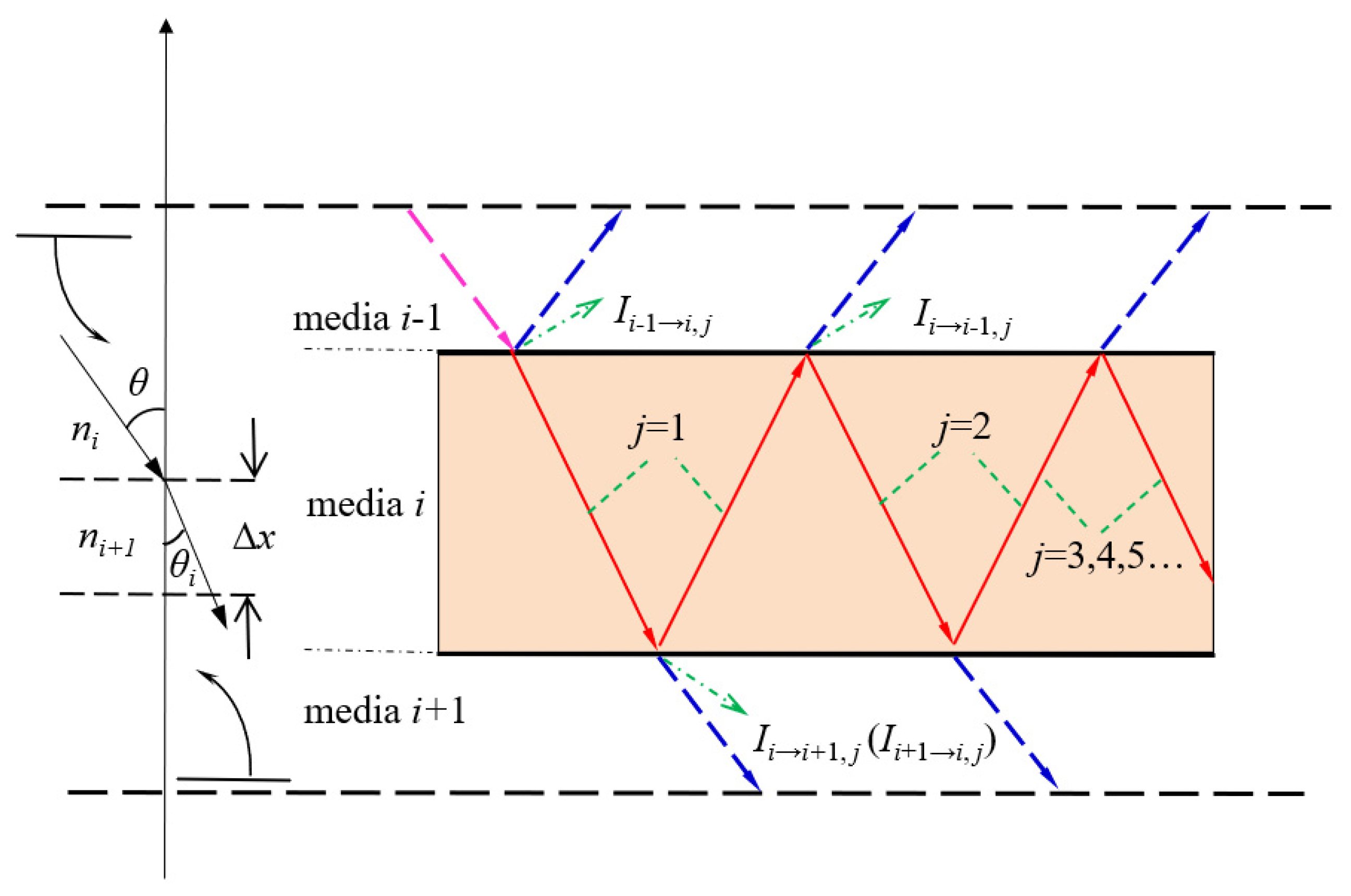
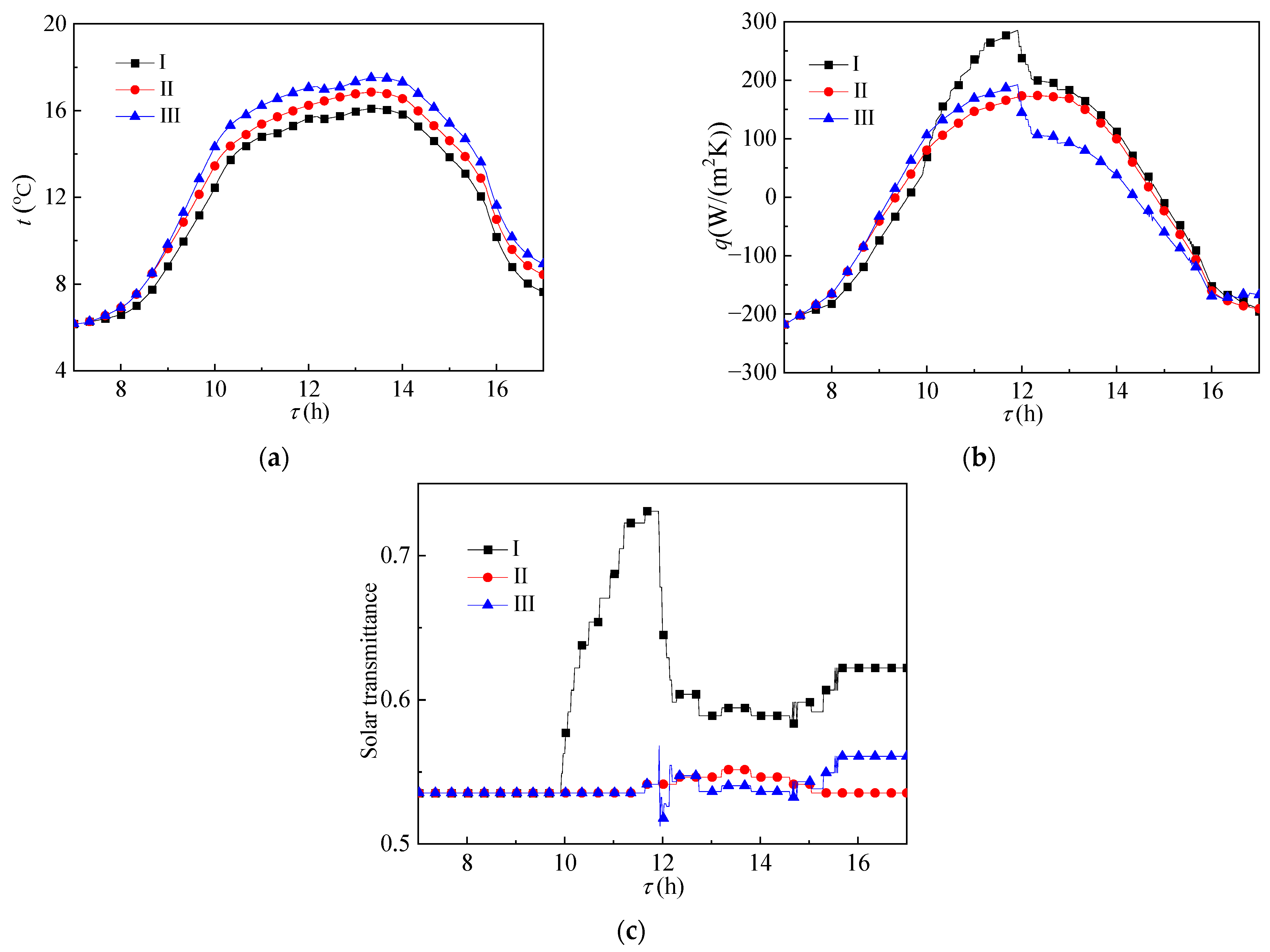
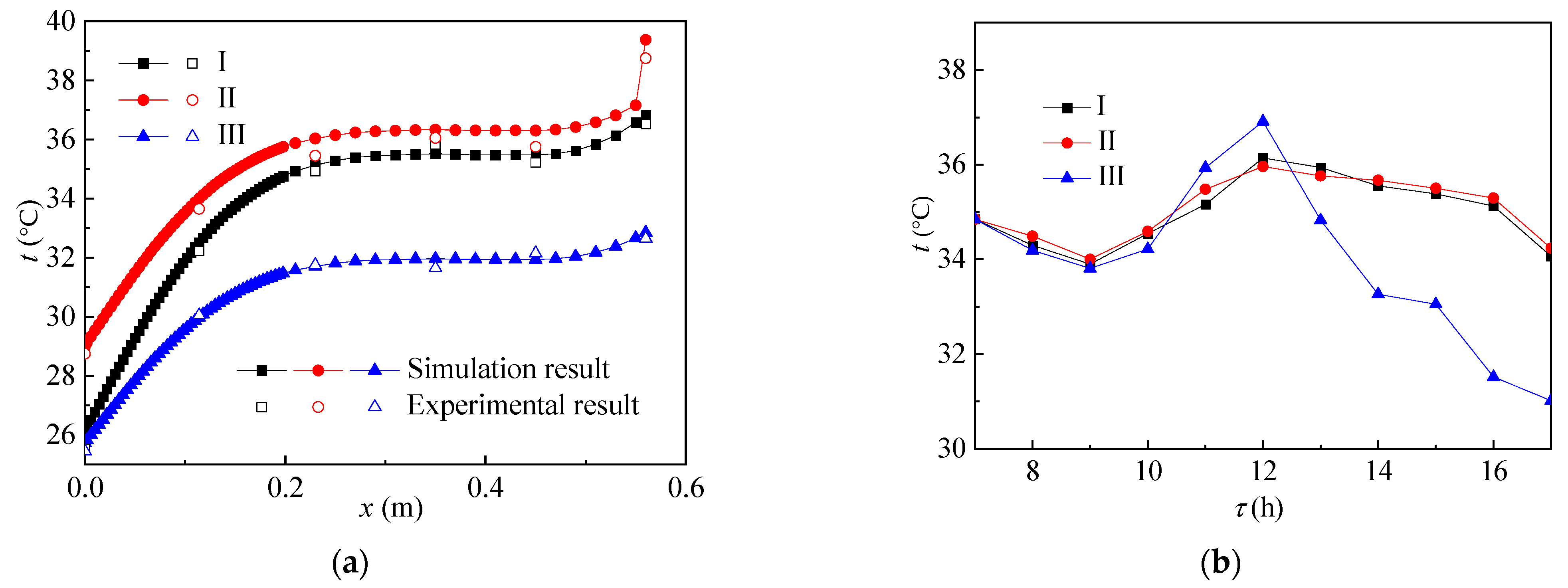

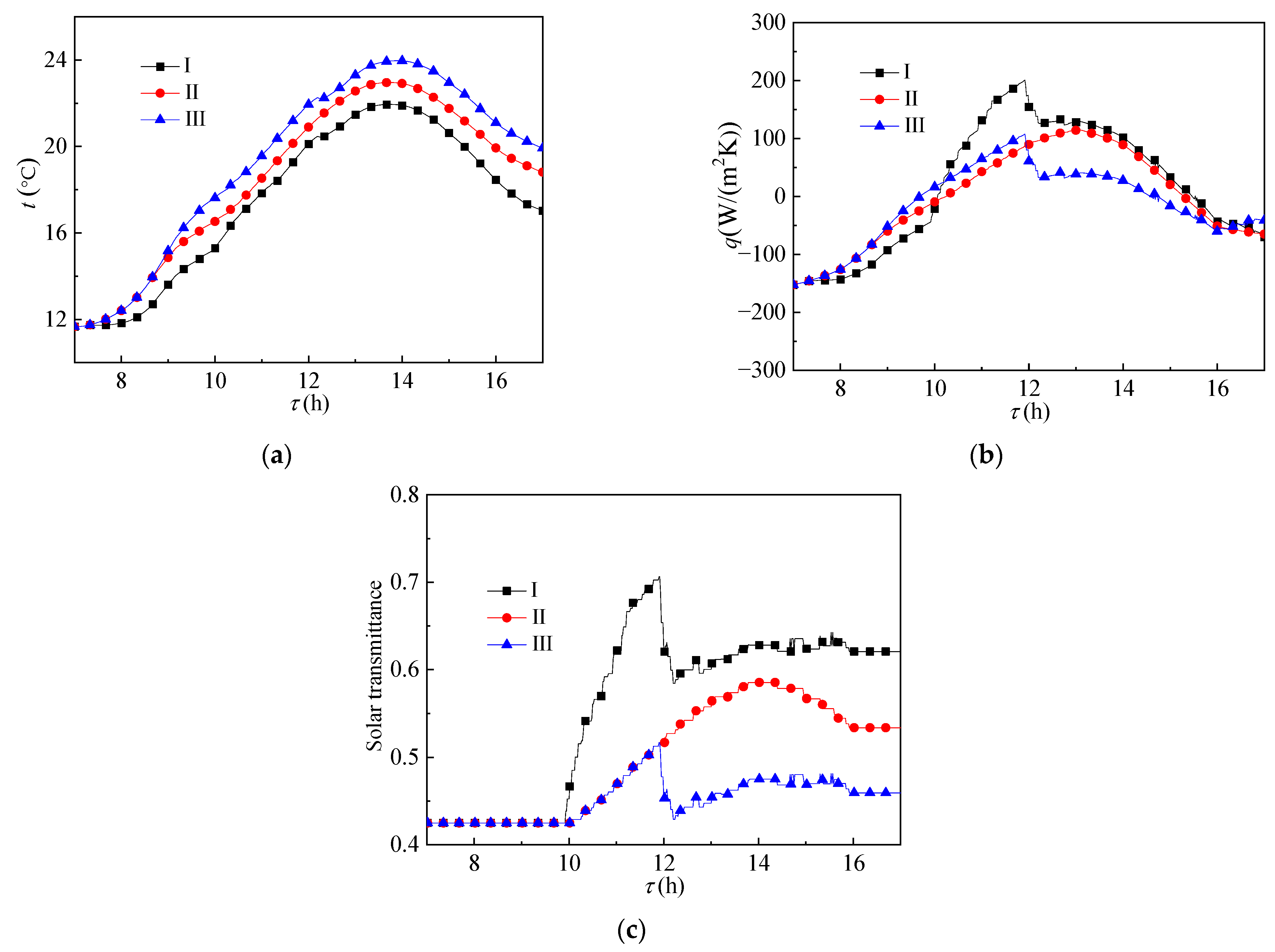
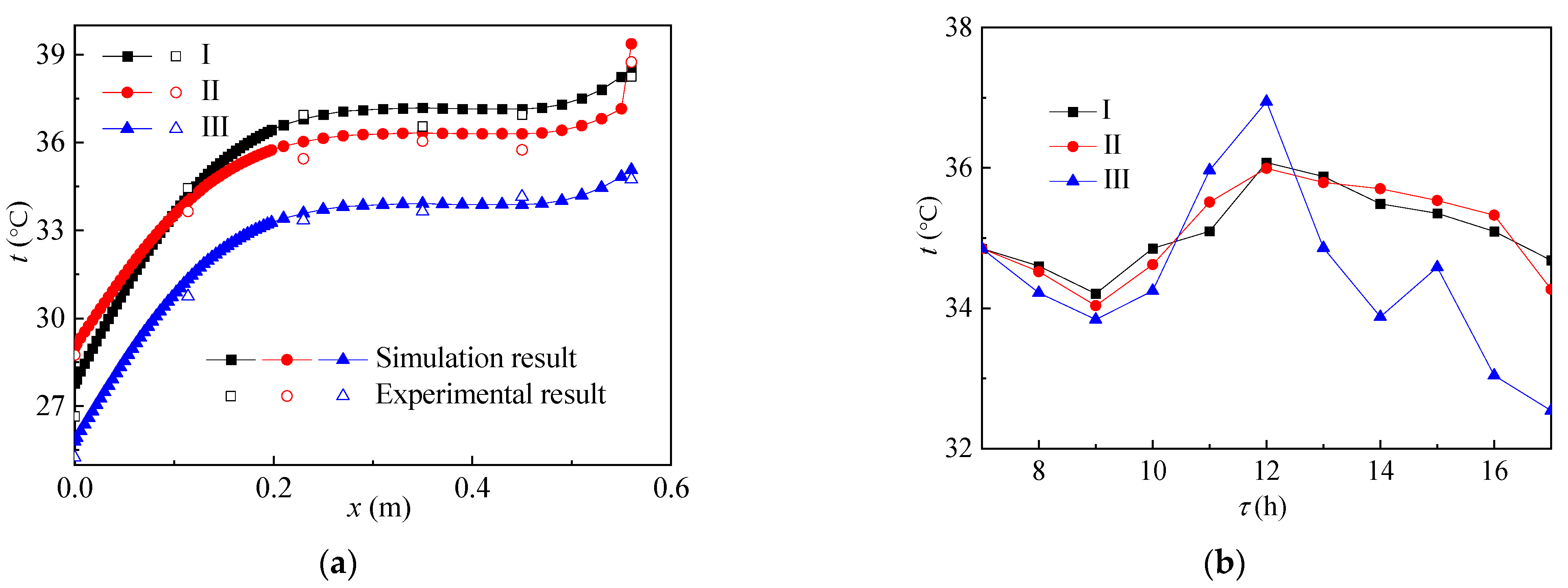
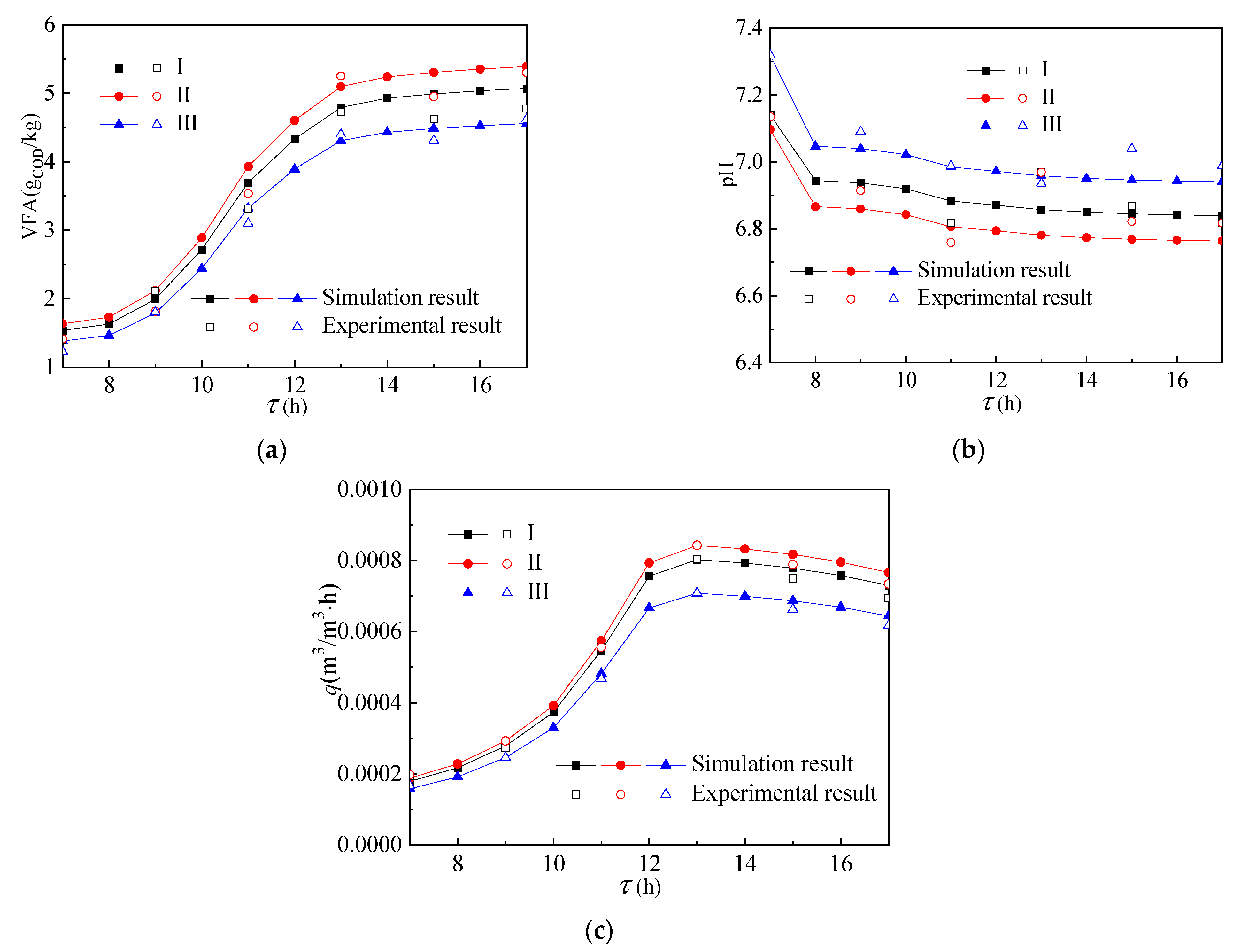
| Number | Instrument | Range | Accuracy | Parameter |
|---|---|---|---|---|
| 1 | Total radiometer | 1500 W/m2 | 5% | Total solar irradiation |
| 2 | Scattering radiometer | 1500 W/m2 | 5% | Scattering solar irradiation |
| 3 | Radiant data collector | - | - | - |
| 4 | Thermocouple | −200–350 °C | 1 °C | Slurry temperature |
| 5 | Thermometer | −50–50 °C | 0.2 °C | Air temperature |
| 6 | Glass reactor | - | - | - |
| 7 | Air collecting bag | - | - | - |
| 8 | Insulation layer | - | - | - |
| 9 | Liquid intake | - | - | - |
| 10 | Computer | - | - | - |
| Reactor | Raw Material | Volume | TS (Raw Material) | Weight (Raw Material) (g) | Weight (Raw Material) (g) | TS (Inoculum) | TS (Slurry) |
|---|---|---|---|---|---|---|---|
| A | Cow dung | 11.5 L | 24.37% | 1862 | 9638 | 2.45% | 6% |
Publisher’s Note: MDPI stays neutral with regard to jurisdictional claims in published maps and institutional affiliations. |
© 2022 by the authors. Licensee MDPI, Basel, Switzerland. This article is an open access article distributed under the terms and conditions of the Creative Commons Attribution (CC BY) license (https://creativecommons.org/licenses/by/4.0/).
Share and Cite
Zhen, F.; Pang, Y.; Xing, T.; Zhang, H.; Xu, Y.; Li, W.; Sun, Y. Effect of Phase Change Materials and Phase Change Temperature on Optimization of Design Parameters of Anaerobic Reactor Thermal Insulation Structure. Int. J. Environ. Res. Public Health 2022, 19, 9020. https://doi.org/10.3390/ijerph19159020
Zhen F, Pang Y, Xing T, Zhang H, Xu Y, Li W, Sun Y. Effect of Phase Change Materials and Phase Change Temperature on Optimization of Design Parameters of Anaerobic Reactor Thermal Insulation Structure. International Journal of Environmental Research and Public Health. 2022; 19(15):9020. https://doi.org/10.3390/ijerph19159020
Chicago/Turabian StyleZhen, Feng, Yuwan Pang, Tao Xing, Hongqiong Zhang, Yonghua Xu, Wenzhe Li, and Yong Sun. 2022. "Effect of Phase Change Materials and Phase Change Temperature on Optimization of Design Parameters of Anaerobic Reactor Thermal Insulation Structure" International Journal of Environmental Research and Public Health 19, no. 15: 9020. https://doi.org/10.3390/ijerph19159020
APA StyleZhen, F., Pang, Y., Xing, T., Zhang, H., Xu, Y., Li, W., & Sun, Y. (2022). Effect of Phase Change Materials and Phase Change Temperature on Optimization of Design Parameters of Anaerobic Reactor Thermal Insulation Structure. International Journal of Environmental Research and Public Health, 19(15), 9020. https://doi.org/10.3390/ijerph19159020






